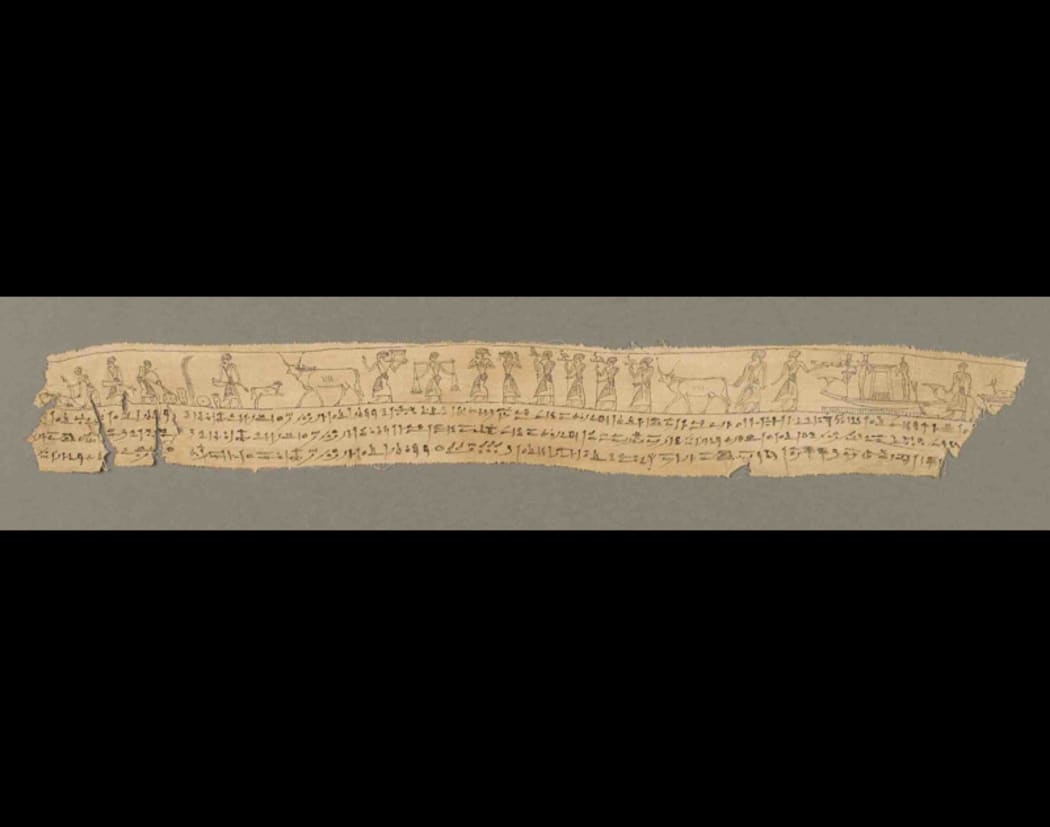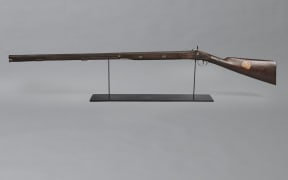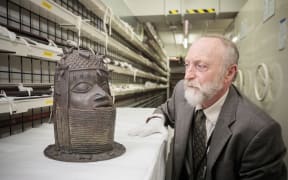Experts have been able to piece together two linen fragments from a 2300-year-old Egyptian mummy's shroud from across the Pacific.

This fragment of a shroud or mummy wrapping dates to the early Ptolemaic period around 300 BC. Photo: Supplied / Teece Museum, University of Canterbury
The fragments are held in the University of Canterbury's Teece Museum of Classical Antiquities and the Getty Institute in the United States.
The discovery was made after the fragment in Christchurch was catalogued online with the museum's other artefacts in the James Logie Collection.
Egyptian art expert, University of Canterbury associate professor Alison Griffith, said the adjoining pieces of shroud depicted scenes and spells from the Book of the Dead, Egyptian hieratic script and date back 300 BCE.
"There is a small gap between the two fragments; however, the scene makes sense, the incantation makes sense, and the text makes it spot on.
"It is just amazing to piece fragments together remotely."
The virtual match of the two fragments has allowed for new translations of the script and further possible connections.
"Egyptian belief was that the deceased needed worldly things on their journey to and in the afterlife, so the art in pyramids and tombs is not art as such, it's really about scenes of offerings, supplies, servants and other things you need on the other side."
The Egyptians wrote directly on the walls of the tomb in earlier periods.
In the later period, they wrote on papyrus and used mummified bodies.
The fragment includes images of butchers cutting up an ox as an offering, men carrying furniture for the afterlife, a funerary boat with the figures of goddess-sisters Isis and Nepthys on either side, and a man pulling a sledge bearing an image of Anubis, Protector of the Dead.
"It is hard to write on material; you need a quill and a steady hand, and this person has done an amazing job," Griffith said.
The head of research archives at the University of Chicago's Oriental Institute, Dr Foy Scalf, shed more light on the James Logie Collection item after learning of its existence and confirming the match.
"Your linen fragment is just one small piece of a set of bandages that were torn away from the remains of a man named Petosiris (whose mother was Tetosiris)," he said.
"Fragments of these pieces are now spread around the world, in both institutional and private collections.
"It is an unfortunate fate for Petosiris, who took such care and expense for his burial. And, of course, it raises all sorts of ethical issues about the origins of these collections and our continued collecting practices."





